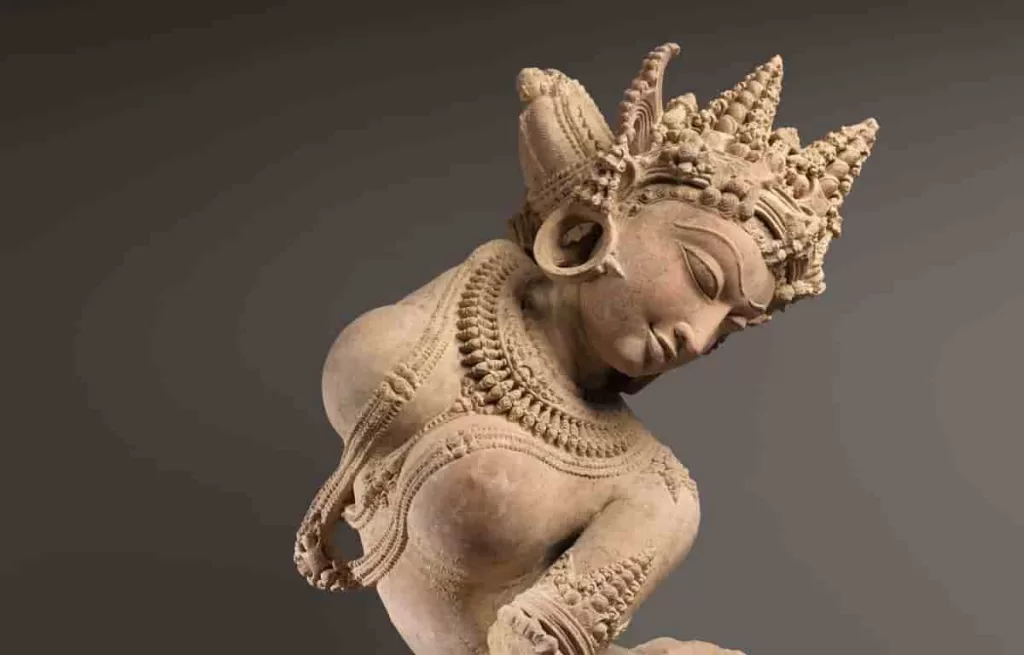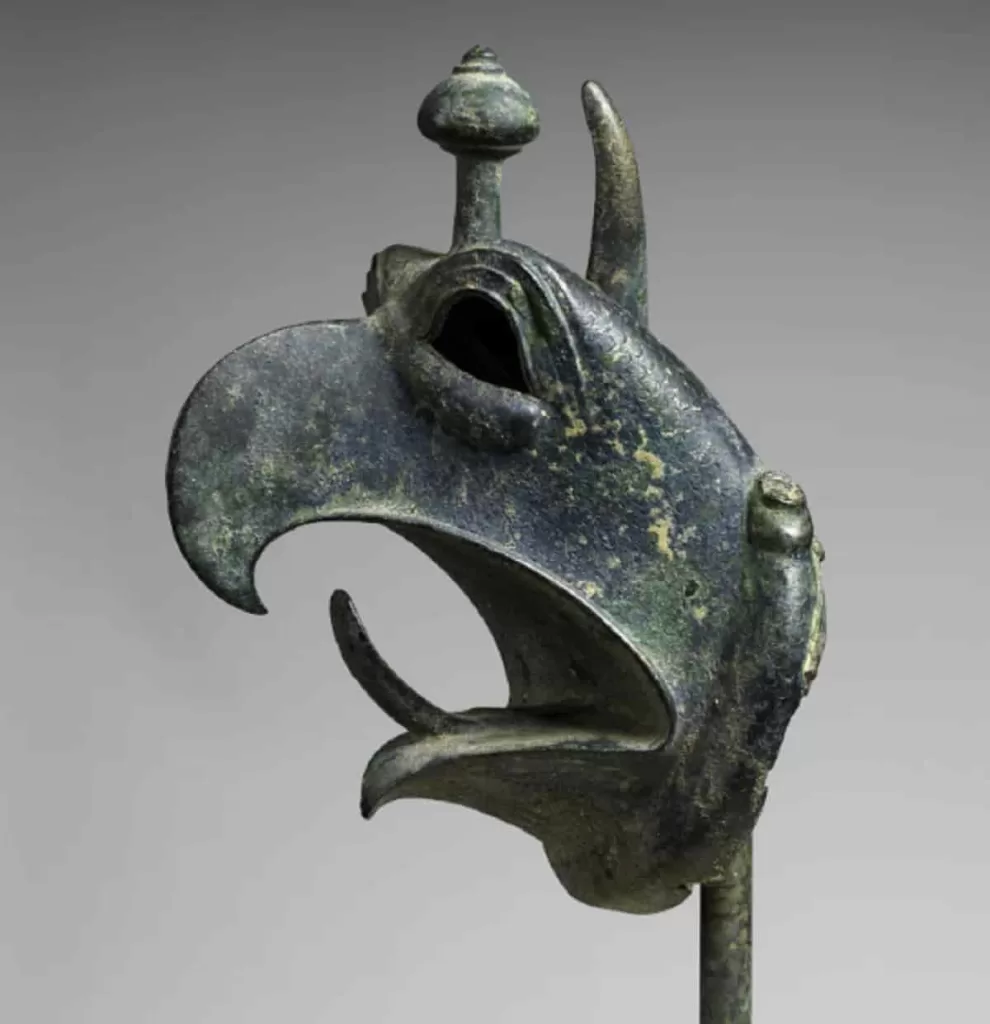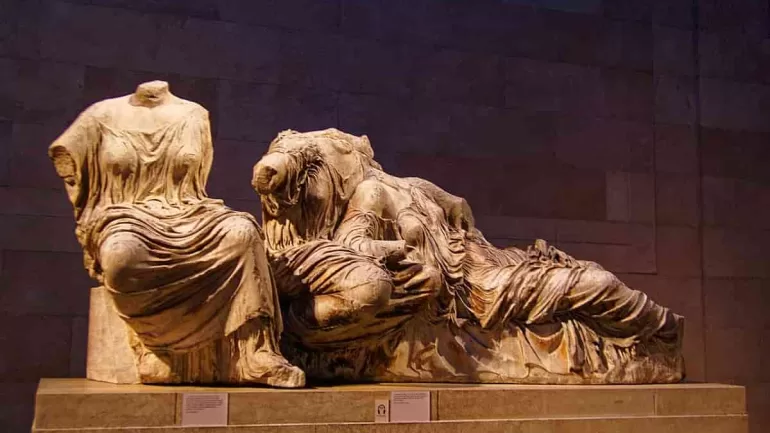MUSEUMS
A section of the Parthenon Marbles also known as Elgin Marbles is presently in the British Museum. Should cultural artifacts be returned? Should Greece get back this important artifact? Photo: Txllxt TxllxT Via Wikimedia CC-BY-SA 4.0
Should cultural artifacts be returned? Weigh the ethical and preservation challenges surrounding the repatriation of global treasures.
BY KAZEEM ADELEKE, ARTCENTRON
The return of cultural artifacts to their country of origin is a subject of ongoing debate within the realm of international relations, ethics, and cultural preservation. Over the years, many institutions, museums, and governments worldwide have faced increasing scrutiny. This inquisition concerns their possession of cultural heritage items taken from Indigenous peoples and nations during colonial eras. As the world becomes more connected, it is evident that the repatriation of cultural artifacts is both a legal and moral issue.
The Debate Over Repatriation

The repatriation of cultural artifacts has gained significant momentum recently. Across the globe, there is a momentous clamor for the return of looted or stolen items to their countries of origin. These outcries are already having major impacts. For example, the Dutch government recently returned 119 Benin Bronzes to Nigeria. The Metropolitan Museum of Art also returned a 7th-century BCE Bronze Head of a Griffin to Greece. These actions have brought immense international attention to the issue of cultural restitution. In addition, they have ignited conversations about the ethics and complexities of ownership, cultural identity, and historical justice. With the barrage of intense focus, it is gradually becoming a trend for institutions to return looted artifacts to their rightful owners. However, one question persists: Should cultural artifacts be returned?
The question should cultural artifacts be returned? has sparked a global debate in recent years. Museums and art institutions around the world are now grappling with the ethics of displaying and owning items taken under dubious or forceful circumstances. As awareness of the need for restitution grows, the debate intensifies. At the core of this contestation is the question of whether cultural artifacts should be returned to their rightful owners. To address this question fully, several factors must be considered. They include historical context, legal implications, cultural significance, and the impact of returns on both the artifacts and the nations involved.
The Historical Context of Artifact Displacement
Many foreign institutions obtained the vast majority of their cultural artifacts during periods of colonial expansion. These artifacts often came from dubious circumstances. In some instances, the colonialists coerced local populations into giving up their precious artifacts, and in others, they forcibly removed them. The acquisition of these objects was part of a broader system of exploitation and oppression. This practice sought to extract value from colonized nations, often at the expense of their cultural heritage.
One of the most infamous examples of such practices is the looting of the Benin Bronzes from the Kingdom of Benin (present-day Nigeria) by British forces in 1897. These intricate bronze plaques and sculptures were stolen during a punitive military expedition. The looters later sold them to various European museums. Similar stories of pillaging occur throughout Africa, Asia, and the Americas. Colonial powers stripped entire civilizations of their cultural treasures.
It is impossible to ignore the historical context of these actions, as they play a crucial role in understanding the arguments for the return of cultural artifacts to their countries of origin. These artifacts were taken without consent. Their removal from the original context has caused lasting harm to the cultural identity of the communities they belonged. Yet, the question remains: Should cultural artifacts be returned?
Why Should Cultural Artifacts Be Returned?

The Argument for the Return of Cultural Artifacts
1. Cultural Identity and the Restoration of Heritage
The return of cultural artifacts has a deep connection to the restoration of cultural identity. For indigenous and colonized peoples, these artifacts are not merely historical relics. They represent the very foundation of their identity, values, and traditions. The continued presence of these artifacts in foreign institutions is a form of cultural erasure. It perpetuates the displacement and marginalization of the communities from which they originated.
By returning cultural artifacts, nations and institutions can help restore a sense of pride and connection to the past. This renewal of dignity and pride benefits the true owners of the objects. For example, returning the Parthenon Marbles (also known as the Elgin Marbles) presently in the British Museum to Greece would allow the Greeks to reclaim a vital part of their ancient heritage. Additionally, it will foster a renewed sense of national identity. The return of the Benin Bronzes to Nigeria would similarly support the cultural revitalization of the Benin people, reconnecting them with their rich history and artistic traditions.
The return of cultural artifacts can also play a crucial role in healing historical wounds. The act of repatriation symbolizes a recognition of the harm caused by colonialism and offers a path toward reconciliation. This process can help foster mutual respect between nations and contribute to building a just and equitable global community.
2. Preservation and Responsibility: Balancing Local and Global Interests
One common argument against the return of cultural artifacts is that these objects are better preserved in foreign institutions. Many museums, especially in Western countries, claim that their advanced conservation techniques ensure the longevity of the artifacts. Furthermore, they also point to the educational value of having such objects available to global audiences. This point, they contend, contributes to a broader understanding of world history and culture.
While these concerns are valid to some extent, they often overlook the importance of cultural context. Cultural artifacts hold the most meaning when viewed within the context of their original culture, traditions, and significance. Museums and institutions may have the technical expertise to care for artifacts. However, they cannot replicate the deep cultural connection that the objects have in the communities of origin.
3. Ethical Responsibility and Historical Justice
One of the most compelling arguments in favor of returning cultural artifacts has roots in ethics and historical justice. Many of these items were taken during colonialism, war, and exploitation. For example, British soldiers looted the Benin Bronzes during the British punitive expedition of 1897. These artifacts were seized through violence, with little regard for the cultural or spiritual significance they held for their true owners.
From an ethical standpoint, the repatriation of cultural artifacts is a matter of justice and reconciliation. The return of such objects is a symbolic gesture that acknowledges the wrongs of the past. Additionally, it restores dignity to the true owner of the cultural heritage. Furthermore, the repatriation process is also a way for former colonial powers to atone for historical injustices. It helps foster a more equitable international relationship. By returning these objects, nations can restore pride and ownership to the communities that created them. Furthermore, this gesture allows the communities to reconnect with their lost heritage and history.
The ethical responsibility of institutions and museums that house these cultural artifacts is also under scrutiny. Many institutions argue that the objects in their collections are getting all the necessary attention they need to preserve them. Additionally, they contend that in their institutions, these objects are more accessible to a global audience. However, this perspective often fails to account for the cultural and emotional value that these artifacts hold for the people of their origin. As public awareness grows, many museums have come under pressure to return these items to their rightful owners.
4. Cultural Identity and Preservation
Artifacts play a crucial role in the cultural identity of a nation or community. They are symbols of heritage, history, and identity that help preserve the stories and traditions of a people. Therefore, cultural items risk losing their cultural context when put on display far from their place of origin. The result is a loss of their full meaning and significance.
Returning cultural artifacts ensures their preservation in a relevant cultural context. The communities that have a direct connection to these items can study, revere, and care for them. This opportunity strengthens cultural identity and promotes a profound understanding of the heritage and traditions that shaped these objects.
5. Legal and International Pressure
The legal arguments for the return of cultural artifacts have roots in the principles of restitution and international law. The establishment of various legal frameworks and conventions to address the issue of repatriation has made these principles pertinent. Intense pressure from international bodies, such as UNESCO, has encouraged the repatriation of cultural property. Many countries have signed agreements and conventions to protect cultural heritage. These agreements call for the return of stolen or looted artifacts. Legal frameworks, like the 1970 UNESCO Convention, emphasize the importance of returning cultural items to their rightful owners.
Moreover, some countries have enacted laws that require the return of cultural artifacts. The United States, for instance, has signed agreements with several countries, including Greece and Italy, to return artifacts taken illegally or without permission. These legal measures reflect a growing recognition of the importance of ethical stewardship and cultural property rights.
6. Strengthening Global Relations and Cultural Diplomacy
Repatriating cultural artifacts can serve as a diplomatic gesture, strengthening international relations and promoting cultural understanding. When nations engage in the return of cultural items, it fosters goodwill and cooperation. This action can also lead to deeper cultural exchanges and collaborations, benefiting all parties involved.
The act of returning cultural property is a sign of respect for the heritage and traditions of other countries. It signals an acknowledgment of past wrongs and a commitment to building more equitable and just global relationships.
The Argument Against the Return of Cultural Artifacts

1. Preservation and Protection
A major argument against the return of cultural artifacts is the concern for their preservation. Many artifacts are currently on display in well-funded, highly secure institutions. Examples include the British Museum, the Louvre, and the Metropolitan Museum of Art. Here, these artifacts are under protection from theft, damage, or deterioration. The climate and facilities in these institutions are often more conducive to preserving fragile objects. This ensures their longevity for future generations.
Returning artifacts to countries without the same level of resources or infrastructure to care for these items could put them at risk. In some cases, the countries receiving the objects may also lack the necessary expertise, funding, or resources to protect them properly. These problems could potentially lead to their deterioration or loss.
2. The Role of Museums as Global Stewards
Critics against the return of cultural artifacts sometimes argue that museums around the world are global stewards of cultural heritage. These institutions, they contend, provide access to artifacts from different cultures and civilizations, allowing people from all walks of life to engage with and learn from the past. By housing diverse collections, they say, museums promote cross-cultural understanding and help preserve the world’s shared history.
Museums often play a vital role in research, education, and public engagement. Returning artifacts to their countries of origin could limit global access to these treasures. This makes them less available for study, exhibition, and educational purposes. Proponents of this view believe that artifacts should remain in internationally recognized institutions where they can be studied by scholars from around the world.
3. The Complexity of Ownership
The issue of ownership is also a significant point of contention. Although many artifacts were looted or taken under questionable circumstances, some may have been acquired legally. Others may have been passed down through generations. Many objects have been in museums or with collectors for over a century, making it difficult to determine rightful ownership.
In some cases, countries of origin may not have a clear or continuous claim to the artifacts. Political instability, changing borders, and shifts in governance further complicate the question of ownership. It is not always clear which modern nation has the right to claim a particular object. This is especially true when the artifact has transcended national or ethnic boundaries.
4. Financial and Practical Challenges
The logistics of returning cultural artifacts can also present significant challenges. Transporting valuable, fragile items across the world can be costly and risky. Furthermore, the legal processes involved in repatriation can be lengthy and complicated, requiring negotiations between governments, museums, and cultural institutions.
In some cases, countries may not even have the necessary infrastructure to display or preserve artifacts properly. Museums and galleries may need to invest in new facilities and resources to ensure the proper care and presentation of the items. Investing in these facilities can be financially burdensome.
Should Cultural Artifacts Be Returned?
The question, ‘Should cultural artifacts be returned?’ does not have a simple answer. While repatriation has clear ethical, legal, cultural, and historical significance, we must weigh it against the practical challenges of preservation and global access. A respectful and thoughtful dialogue must continue between countries, institutions, and communities. This deferential gesture will help to find a solution that honors both the artifacts and the people to whom they belong.
The return of cultural artifacts to their country of origin is not only a matter of legal and ethical obligation. It is also a vital step toward healing historical wounds and restoring cultural integrity. As the world becomes more interconnected, the call for repatriation grows louder. Institutions and governments must acknowledge the injustices of the past and take meaningful action to right these wrongs.
What Should Be Done?
While the return of artifacts is an important step in rectifying historical wrongs and preserving cultural heritage, it is also essential to consider the challenges associated with preservation, accessibility, and ownership. A balanced approach may be the best solution. Countries and museums can collaborate to ensure the proper preservation of artifacts and accessibility. Efforts must also address the ethical and legal issues surrounding ownership. One possible solution is creating partnerships for shared stewardship. Art institutions can temporarily return or, on a rotating basis, share artifacts with their rightful owners. This approach will benefit both the countries of origin and the global community.
By working together, these institutions can ensure the preservation of cultural artifacts in both local and global contexts. More importantly, this approach would allow for the continued protection of these treasures. Furthermore, it would establish respect for the cultural rights of the nations to which they belong. Above all, this collaborative effort will ensure a more just, respectful, and inclusive global society.
